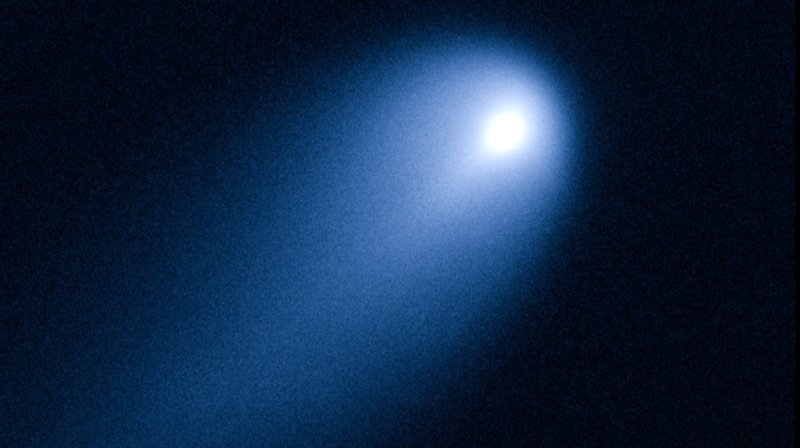NASAÕs Hubble Space Telescope provides a close-up look of Comet ISON (C/2012 S1), on April 10,2013. At the time, the comet was slightly closer than JupiterÕs orbit at a distance of 386 million miles from the sun. The cometÕs dusty coma, or head of the comet, is approximately 3,100 miles across, or 1.2 times the width of Australia. A dust tail extends more than 57,000 miles, far beyond HubbleÕs field of view. ISON stands for International Scientific Optical Network, a group of observatories in ten countries who have organized to detect, monitor, and track objects in space. UPI/NASA/ ESA/ J.Y. Li |
License Photo
COLLEGE PARK, Md., April 24 (UPI) -- Astronomers say NASA's Hubble Space Telescope has given them the clearest view yet of Comet ISON that may light up the sky later this year as it nears the sun.
Researchers at the University of Maryland are part of a team closely following ISON to take advantage of a rare opportunity to witness a comet's evolution as it makes its first-ever journey through the inner solar system.
ISON, a "dirty snowball" of frozen gases mixed with dust, formed in a distant reach of the solar system in an orbit that will bring it to a perihelion, or maximum approach to the Sun of 700,000 miles on November 28, Maryland research scientist Michael S. Kelley said in a university release Wednesday.
Comets become more active as they near the inner solar system where the Sun's heat evaporates their ices into jets of gases and dust, but even at the orbit of Jupiter ISON is already active, with the Hubble images showing a strong jet blasting dust particles off its nucleus.
While Hubble still has the comet in view, the Maryland team said it would use the space telescope to gather information about ISON's gases.
"We want to look for the ratio of the three dominant ices, water, frozen carbon monoxide, and frozen carbon dioxide, or dry ice," Maryland astronomy Professor Michael A'Hearn said. "That can tell us the temperature at which the comet formed, and with that temperature, we can then say where in the solar system it formed."















